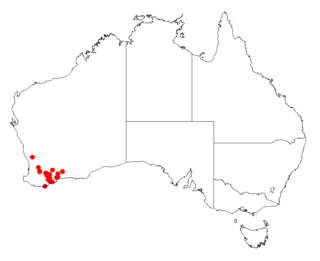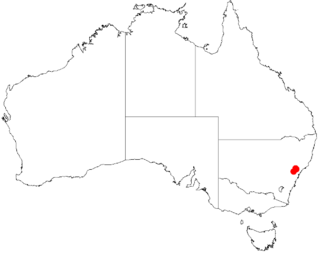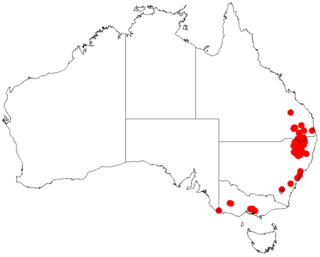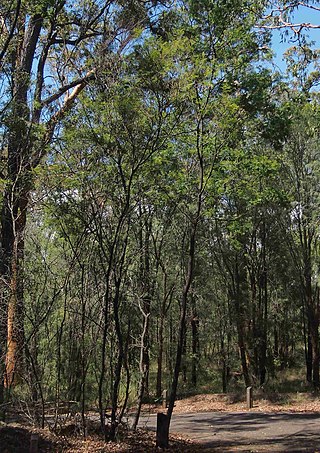
Senegalia greggii, formerly known as Acacia greggii, is a species of tree in the genus Senegalia native to the southwestern United States and northern Mexico, from the extreme south of Utah south through southern Nevada, southeast California, Arizona, New Mexico and western Texas to Baja California, Sinaloa and Nuevo León in Mexico. The population in Utah at 37°10' N is the northernmost naturally occurring Senegalia species anywhere in the world.

Aralia spinosa, commonly known as devil's walking stick, is a woody species of plant in the genus Aralia, family Araliaceae, native to eastern North America. The various names refer to the viciously sharp, spiny stems, petioles, and even leaf midribs. It has also been known as Angelica-tree.

Acacia pulchella, commonly known as prickly moses or western prickly moses, is a shrub in the family Fabaceae. Endemic to Western Australia, it is one of the most common shrubs of the bushland around Perth and in the Darling Range.

Senegalia laeta, the gay acacia or daga, is a legume found in the family Fabaceae. It was formerly included in the genus Acacia.
Vachellia nubica is a species of plant in the family Fabaceae.

Vachellia reficiens, commonly known as red-bark acacia, red thorn, false umbrella tree, or false umbrella thorn, is a deciduous tree or shrub of the pea family (Fabaceae) native to southern Africa, often growing in an upside-down cone shape and with a relatively flat crown.

Vachellia flava, synonym Acacia ehrenbergiana, is a species of drought-resistant bush or small tree, commonly known as salam in Arabic. It is found in the Sahara, the northern Sahel, parts of East Africa, the Arabian Peninsula and Iran.
Acacia sulcaticaulis, also commonly known as the Mount Mulgine fluted wattle, is a shrub or tree belonging to the genus Acacia and the subgenus Juliflorae that is native to a small area in western Australia.

Acacia amputata is a shrub of the genus Acacia and the subgenus Pulchellae that is endemic to an area of south western Australia.

Acacia browniana, commonly known as Brown's wattle, is a shrub of the genus Acacia and the subgenus Pulchellae. It is native to an area in the South West and Peel regions of Western Australia.

Acacia pentadenia, commonly known as karri wattle, is a shrub or tree of the genus Acacia and the subgenus Pulchellae.

Acacia alaticaulis is a shrub to tree of the genus Acacia and the subgenus Botrycephalae that is native to eastern Australia.

Acacia oshanesii, commonly known as corkwood wattle and irish wattle, is a species of Acacia native to eastern Australia.

Acacia muelleriana is a species of Acacia native to eastern Australia.

Acacia pruinosa, commonly known as the frosty wattle, is a species of Acacia native to eastern Australia.

Acacia debilis, commonly known as the spindly wattle, is a species of Acacia native to eastern Australia.

Acacia storyi, commonly known as Story's wattle, is a species of Acacia of the subgenus Botrycephalae that is native to eastern Australia. It is listed as near threatened according to the Nature Conservation Act 1992 of Queensland.

Acacia linearifolia, commonly known as stringybark wattle or narrow-leaved wattle, is a shrub or tree of the genus Acacia and the subgenus Phyllodineae that is endemic to eastern Australia.

Acacia subporosa, also commonly known as river wattle, bower wattle, narrow-leaf bower wattle and sticky bower wattle, is a tree or shrub of the genus Acacia and the subgenus Plurinerves that is endemic to an area of south eastern Australia. It is considered to be rare in Victoria

Berlinia grandiflora is a small to medium sized tree found in the West and West Central African region along riparian habitats or gallery forests habitat types.

















